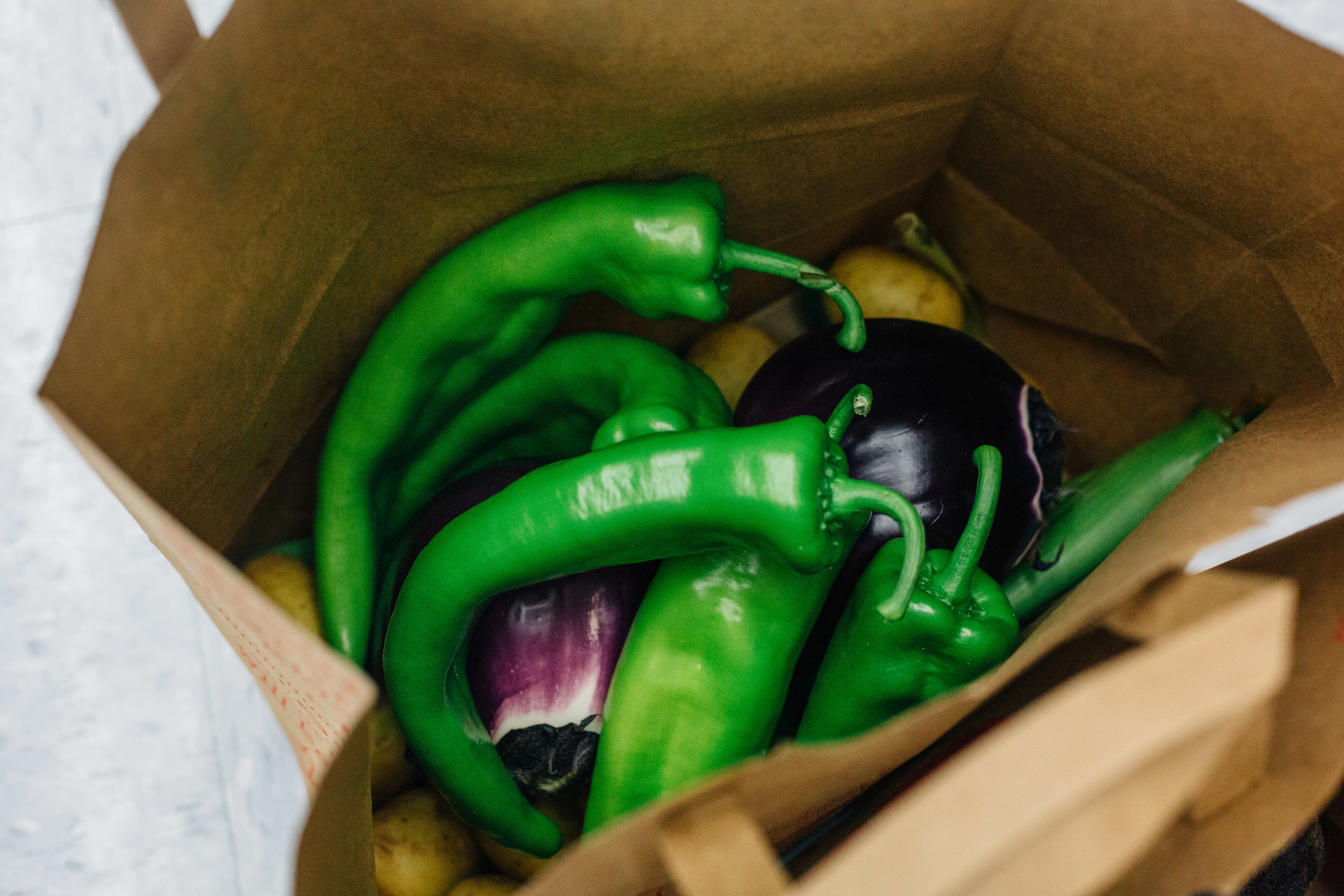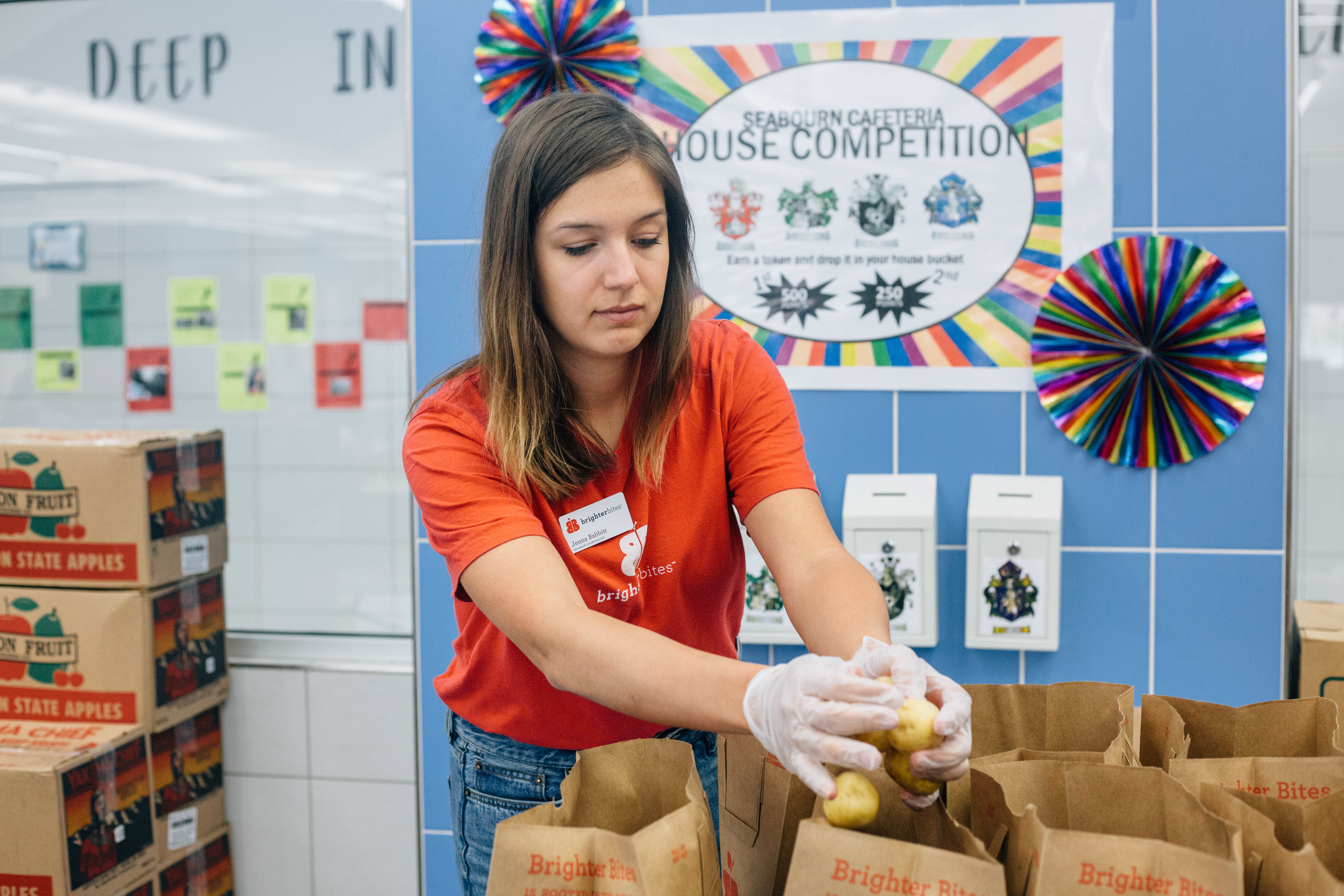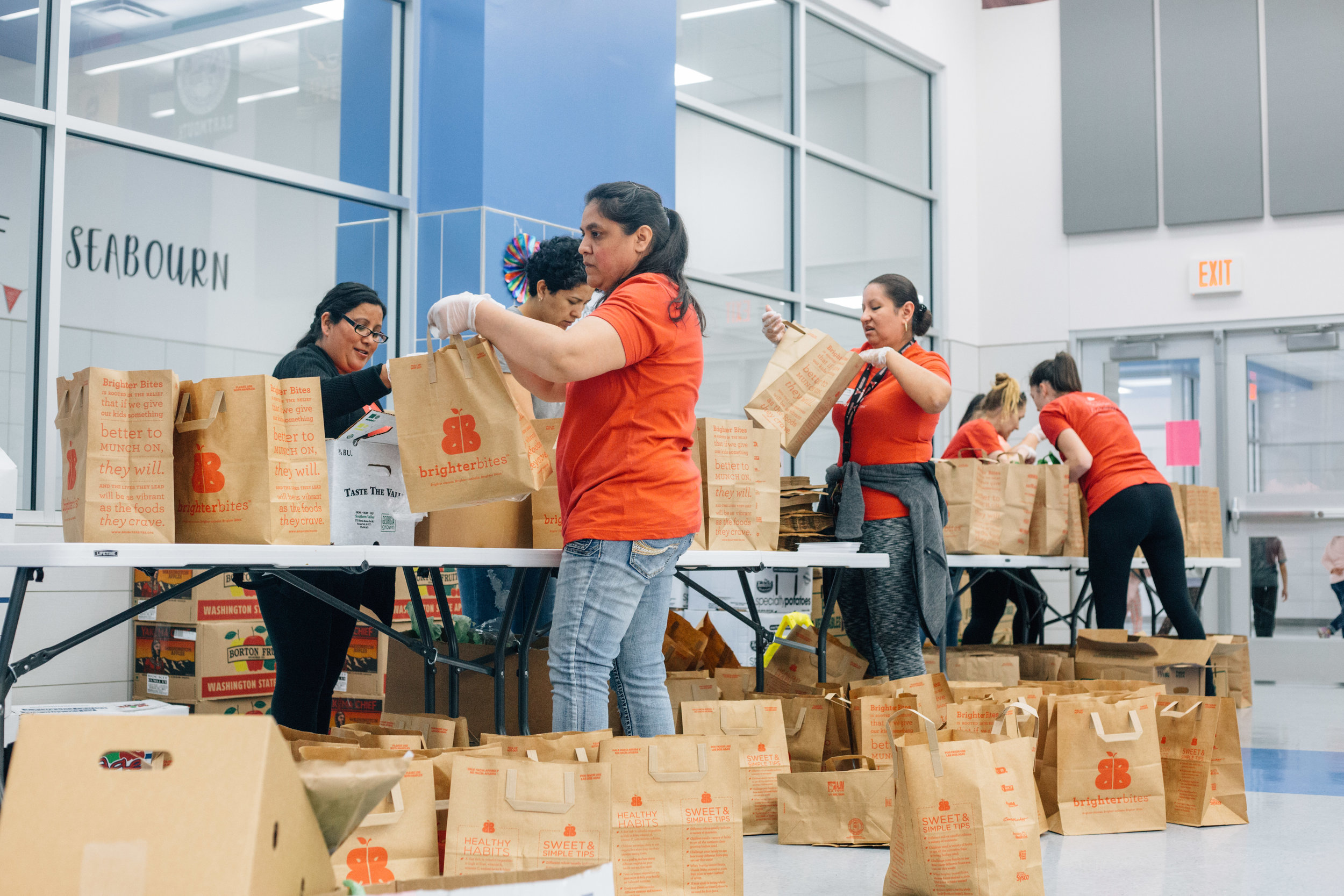Carrots, spinach, cilantro, apples, tomatillos, tomatoes, and a giant crate of onions engulf the gymnasium at Stevens Park Elementary School, where parent volunteers are bustling to sort 4,200 pounds of produce and stuff 420 grocery bags. In a zip code where fresh food is not readily accessible, Brighter Bites is filling the void.

Many Dallas communities face two obstacles when it comes to developing healthy eating habits: financial ability, and accessibility. In Dallas ISD, a staggering 87.6% of students are considered “economically disadvantaged,” meaning they are eligible for free or reduced-price lunch. Additionally, the recent term ‘food swamps’ has been coined to more accurately describe what is often referred to as a ‘food desert.’ While a food desert represents a low-income community lacking in grocery stores or other health food providers, a food swamp includes a saturation of fast food and unhealthy food options. If you were to drive the streets of a school’s community participating in Brighter Bites, you would see multiple burger joints, an ice cream shop, and all the french fries you could ask for, without a glimpse of a Kroger or Tom Thumb or other produce supplier.
It is not surprising that families in these communities are lacking in nutrition education and health food awareness. If you have never laid eyes on a butternut squash or examined a bundle of arugula, and must find transportation to a produce supplier miles away, how would you be able to maximize your child’s healthy eating habits? Alarming research indicates that the current generation of American kids may not live as long as their parents, often due to obesity or other health factors. For a developed nation, these statistics are unacceptable.
Lisa Helfman and Dr. Shreela Sharma, Brighter Bites founders, are challenging the statistics. After participating in a produce co-op and watching her son choose blueberries over cake, Lisa was compelled to introduce the co-op model in food swamp communities. As proven by Dr. Sharma’s two-year study and current tri-annnual surveys, Brighter Bites’ families are exemplifying healthier habits, less added sugar, more home cooking, healthier snacking, more family meals, and smarter shopping.
To be included in the Brighter Bites movement, a family signs up through their child’s school. Each week, the families come to the school, engage with Brighter Bites staff and volunteers, and leave with two free bags of produce. To go a step further, parents can volunteer to help pack and distribute the produce bags. By not participating in the program, families may continue to live in a home lacking in produce. Brighter Bites invites parents to change the narrative.
Families encounter three unique benefits of participating in their school’s Brighter Bites program: produce distribution, nutrition education, and a fun food experience. As they say in the Brighter Bites world, “fill the plate, educate, and make it great!”
“[The free produce distribution] helped when I was struggling with food,” Brighter Bites momma, Pauline, explains. Pauline is also a faithful volunteer of the program, joining the 190 parents across all the Dallas Brighter Bites locations who volunteer to sort and bag 52,000 total pounds of produce each week. Families visit the school to pick up their produce bags, which are bursting with fresh fruit and vegetable options. “I love seeing them come through and get their bags,” Pauline smiles. She also tells a story of her experience wandering into uncharted territory: eggplant.
“Last year, they introduced us to eggplant. I’d never cooked with eggplant before! I made eggplant parmesan for the first time with pasta, and my son loved it. He asked me, ‘Mom, when can we do it again?’ One out of my five children liked eggplant – so I’m good!”
Gwen Montero, Parent Instructor at Stevens Park (with 98% economically-disadvantaged students), shares about the nutrition education aspect of Brighter Bites. Each teacher receives a free produce bag and activities to engage the class, from identifying the funny-looking produce to discussing food ‘swaps,’ like swapping sweet potatoes sticks for french fries. “The kids get excited to see the bags, saying, ‘The veggies are here! What do we get today?’” Gwen laughs. “Especially when we get items the kids have never seen before. Last year we got some butternut squash, which was very new to our community. They were like, ‘What is that?’” The Brighter Bites team partners with the North Texas Food Bank and produce suppliers like Brother’s Produce to ensure a wide variety of high quality fruits and vegetables each week, though they are always on the hunt for more produce vendors.
When kids are involved, the health food experience has to be fun! At every produce distribution, volunteers hand out colorful recipes and samples incorporating that week’s produce. Parents chat and community is cultivated. “These schools who didn’t have a strong volunteer base develop an amazing community,” Jenna Babbitt, Brighter Bites Program Coordinator, shares. “Everyone knows that food brings people together – it’s inspiring to see all these families get connected through fresh food.”
Jenna dreams of a future where produce is so high in demand, it will lure produce suppliers back into these long-forgotten neighborhoods.
“Our goal is that families get used to making produce a part of their daily lives,” said Jenna. “We start this by providing produce, but our emphasis on education gives families the tools to maintain their habits of consuming fruits and vegetables well beyond our program. This, ultimately, is creating demand for fresh produce.”
Since its inception, Brighter Bites has distributed 7,443,348 pounds of produce in Dallas alone and currently partners with twenty schools across Dallas, Garland, and Mesquite Independent School Districts. This summer, they will be distributing at eight sites and welcome volunteers to sort and bag produce. Together, we can make an abundant variety of fresh food accessible to our Dallas neighbors.
If you know someone who is Doing Good in Dallas, we’d love to hear about it! Share their story with us.
Story by Katie Kelton. Photos by Hunter Lacey.


